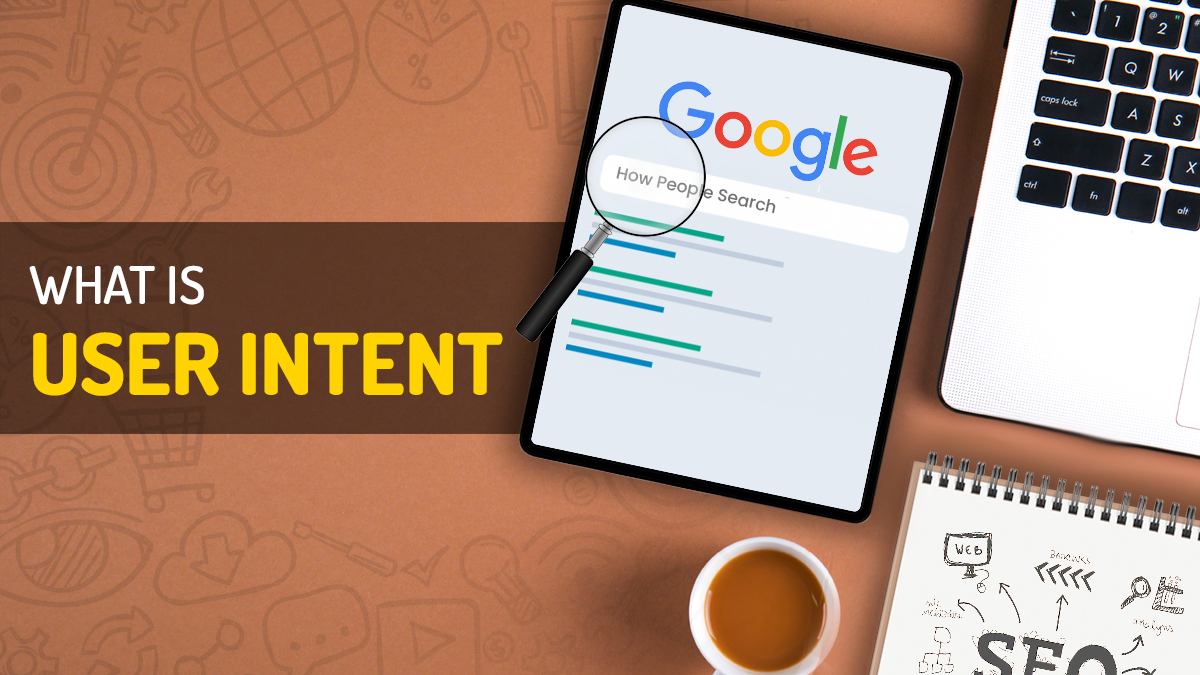As marketers, we often wish we could know what our customers are thinking. It would be much easier for us if we knew what buyers want, what they like, and how to talk to them in a way that catches their interest.
Search engines want to know this, too. They use very advanced methods to study the human brain by looking at questions and how people act. Understanding what users want and using that data wisely can help marketers overcome one of their biggest challenges.
HubSpot reports that 61% of marketers had trouble getting new customers and traffic to their business. This was even more important than getting a budget and figuring out how much money they would make from their strategies.
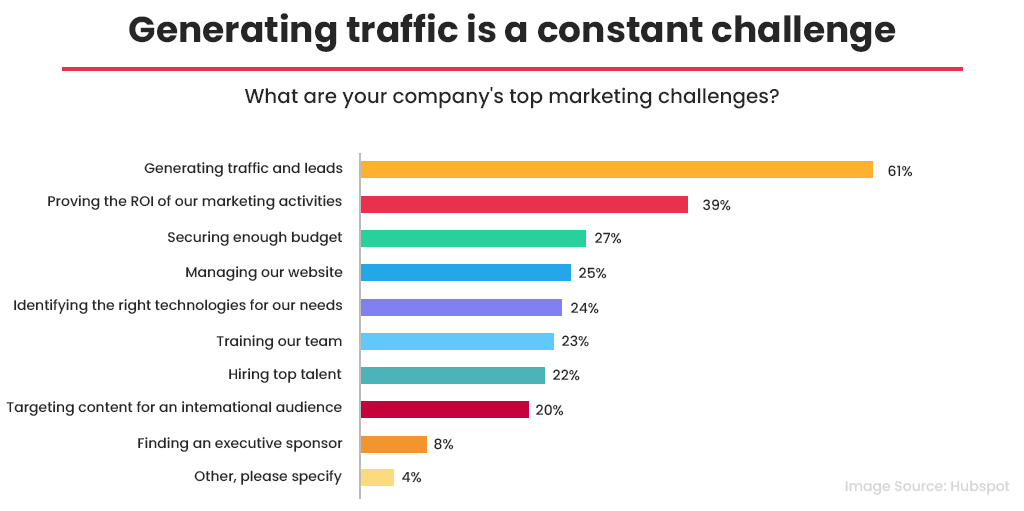
User intent isn’t a mystery that only Google understands. Any business can find out what their customers want and make changes based on that. Figuring out what users want and how it relates to marketing is a great way to appear on Google and boost your sales.
In this post, we will explain “what is user intent”, its importance, and how you can use it to boost your SEO, improve marketing results, and increase conversion rates, and thus sales.
What is User Intent?
In simple words, user intent is a way to understand what someone wants or means when they search for something online. Sometimes, it’s easy to identify this. Sometimes it’s hard.
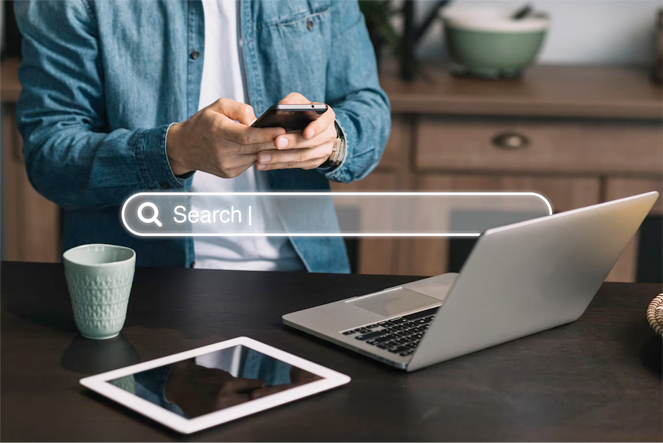
For example, if someone types “buy blue raincoat” into Google, it’s likely that they want to buy a blue raincoat. But, what if someone just types in “rain”. They might want to buy a raincoat, but they could also be looking for information on preventive measures during this season, health concerns, or level of rain, and more.
SEO experts can help you understand user intent by analyzing search patterns and behaviors, enabling you to optimize your content to meet users’ needs and improve your search engine rankings effectively.
Importance of User Intent
Better User Experience
Figuring out what users want is very important for making their experience better on a website or app. When the content matches what people really want, they feel happier and are more likely to interact again.
For example, if someone looks for “best hiking trails,” giving them detailed guides, reviews from other users, and helpful pictures makes their experience better. By understanding what users want, businesses can reduce frustration and help visitors find what they’re looking for more easily.
This makes users stay on the site longer and helps them trust it, so they are more likely to come back. In today’s tough market, providing personalized experiences that meet what customers want is important for keeping their loyalty and building good relationships with them.
Boosts Search Engine Rankings
By knowing the different reasons why people search online, like looking for information, finding a specific website, or wanting to buy something, marketers can create better content that matches what those people are looking for.
For example, improving blog posts to give information or enhancing product pages to encourage buying can attract more specific visitors. Also, content that matches what people are looking for is more likely to rank higher in search results and get more clicks, which means it will be seen by more people.
By putting user needs first in their SEO efforts, companies can improve their online visibility, attract more relevant visitors, and increase sales. This also bodes well for search engines.
Drives Content Strategy
User intent helps guide how to create a good content strategy. By looking at what people are searching for, companies can make content that answers their needs and questions.
For example, if data shows that people want “how-to” guides for a certain product, companies can create clear articles, videos, and charts that show them how to use it step by step. This means that the content is both important and useful, which makes it more likely to be shared and linked to by others.
Also, a good content plan that focuses on what users want can help a brand become an expert in its field, bringing in more visitors and potential customers. Knowing what users want helps make content that connects with the right audience.
Boosts Conversion Rates
User intent is closely linked to how often people make a purchase or take an action. It helps businesses understand what drives users to buy something or do what they want.
By understanding what users really want and need when they search, companies can create personalized marketing messages and prompts that connect better with them. For example, a person wanting to buy running shoes is likely to be interested in sales, comparisons of different shoes, or reviews from other customers.
By meeting these needs well, businesses can make it easy for customers to buy. When customers feel that the brand understands and meets their needs, they are more likely to trust it. This can result in more sales and higher conversion rates.
Helps Create Better Marketing Strategies
Knowing what users want is important for creating marketing plans that connect well with the right audiences. By looking at how users act and what they like, marketers can group their audiences based on what they want and make specialized campaigns that meet different needs.
A person looking for “cheap gym memberships” is more likely to like discounts and good deals than someone looking for “high-end fitness experiences”. This focused method not only helps get more people interested but also makes ad spending smarter by connecting the right message with the right audience.
Including what customers want in marketing plans results in better connections, happier customers, and better overall results, helping the business succeed in the long run.
Types of User Intent
Informational
Many users are searching just to get information. They might be searching for a recipe, instructions, advice, or an answer to a question.
Even though it’s estimated that only 8% of all searches are questions, that’s still a lot when you think about the billions of searches done every day. This number only counts questions that start with words like “where,” “what,” “who,” “when,” “why,” or “how. “
People usually find answers to their questions in blog posts, guides, videos, and similar materials. The important thing is to be unbiased. When people want answers, advice, or instructions, they usually don’t want to be sold to in an aggressive way.
Navigational
This is when people are trying to find a certain website or page on the internet. This could mean a website for a local shop, an article, or a type of media like a video. Users usually add descriptions to help them find the page they want.
In this type, the user already knows the brand or place they want to find, like typing in a website address or looking up a brand, product, or service. For example, when someone types “Netflix” or “Amazon Prime login,” they are trying to go straight to those websites.
Knowing navigational intent is important for businesses because it shows how vital it is for them to be seen and have a strong online presence. Businesses should make their websites better for search engines so that people can easily find them.
Transactional
Transactional intent happens when a customer is ready to buy something, usually at the final step of their shopping journey.
A person’s reason for searching can be a mix of these types. For example, “buy a blue raincoat from Target” shows that the person wants to buy something. But they also know where to go because they want to shop at Target.
You will probably want to focus on all three of these groups with your marketing and SEO plans. Some pages, like blog posts, are useful for informational and navigational searches, while product pages can focus on transactional ones.
Also Read: Unlocking Profits with Long Tail Keyword Optimization: Your Essential Guide for 2025
How Does Google Understand What Users Want?
Google is really good at understanding what users want. Their system is made for understanding natural language. It looks at hints and a lot of data to figure out what each question really means.
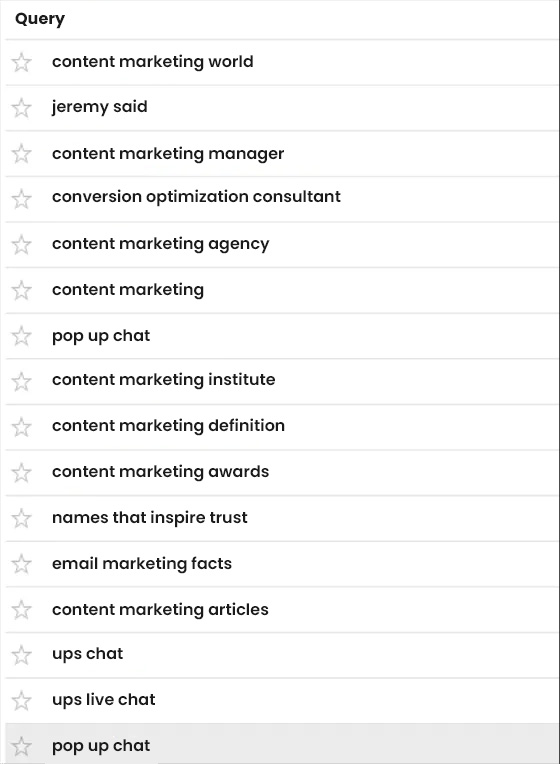
It then looks at web pages to find keywords that match the search and what the user is looking for, so it can show them on the search results page. Tools like Google Search Central let you find out which searches are bringing visitors to your website. This can help you understand what your audience wants to know right now.
To get a good ranking, attract visitors, and turn them into customers, your messages should match what people are looking for. Your first step in coming up with content ideas should be based on research about what people are looking for online.
What User Intent Teaches Us?
Your main goal should be to attract more visitors who are interested in your product, not just to increase the number of visitors. Your landing pages and content should match what people are looking for in different search requests. This means finding related metrics from the search entries, like:
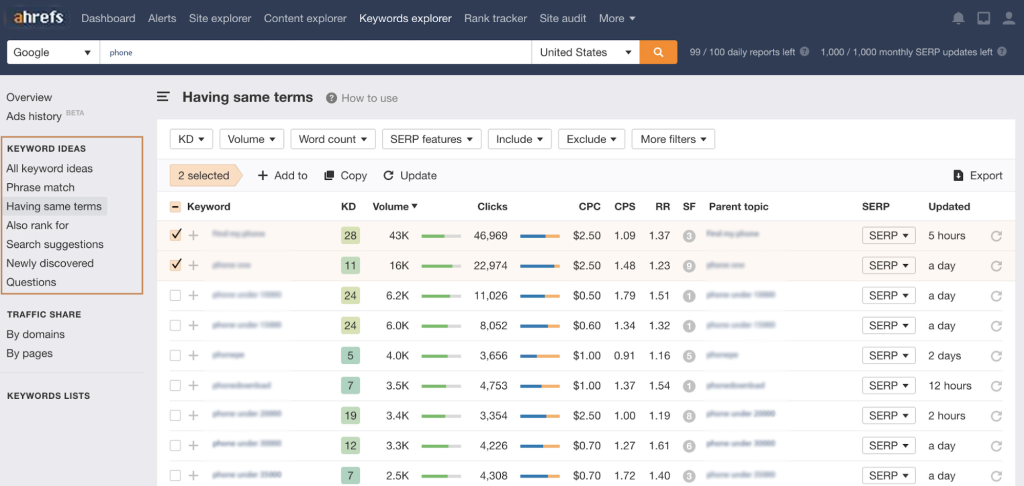
- Bounce rates for landing pages
- How much of the form is filled out?
- Page or shopping cart abandonment rates
- Add-to-cart rates
- Click rates for navigation links
If someone searches for “seo services pricing,” they probably want to buy these services because they might be looking to hire a professional. Now, let’s say your link shows up when they search.
This means customers go to your page where they can see the prices. If few people are taking action on this page, it’s likely that it doesn’t meet what they are looking for. This might mean you need to make your information about seo prices and services clearer.
You need to do careful research on keywords to help you create your content. Look for specific phrases that show what people want, like questions or longer search terms that give more details. Keyword generator tools like the one from Ahrefs are really useful for this. They will give many similar options and information on how often they are used.
Use Google’s Tabs to Match Intent
Google sorts its search engines by what people are looking for. Their homepage is great for looking up information, but users can click on the shopping tab to buy things or choose news, maps, or video tabs to narrow down their searches.
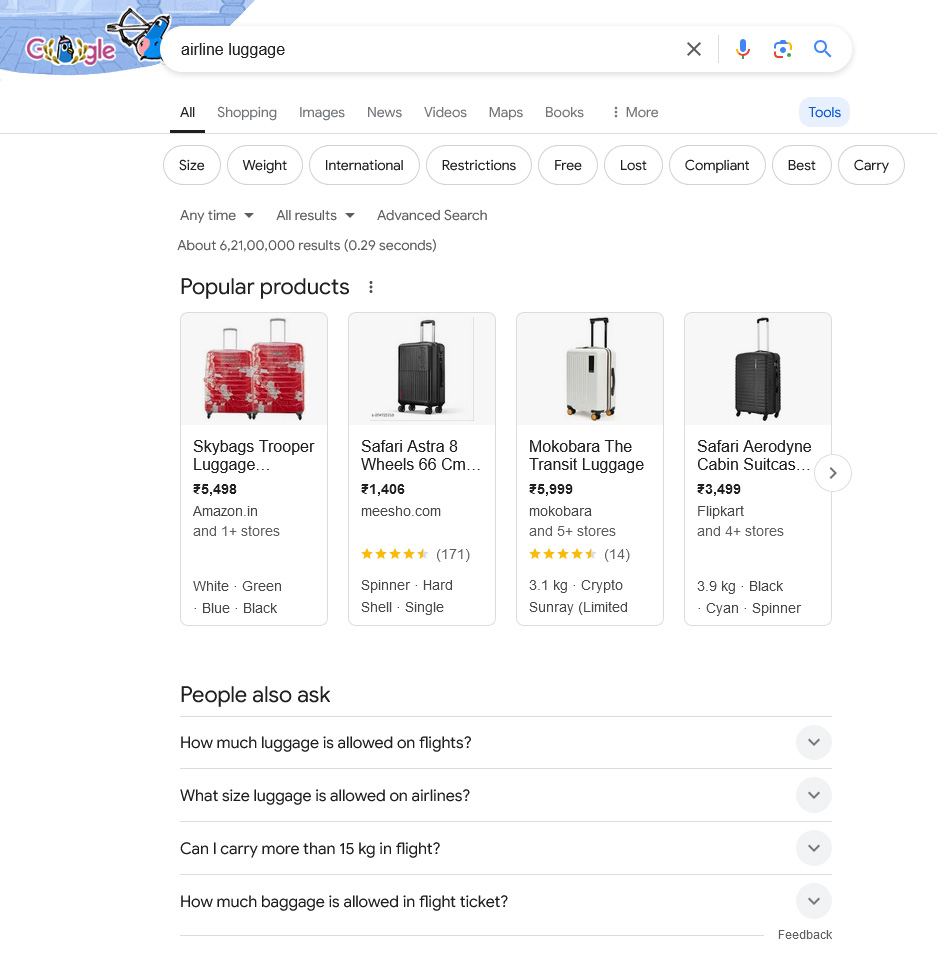
You can use these Google tabs as a guide to make simple marketing content that matches these ideas. This means making a strong marketing plan that includes blog posts, articles, product pages, videos, and maybe even pictures like infographics.
It’s important to make content that matches each Google section. You might need to use keywords and tags to organize your content. For example, videos need titles and descriptions that include important keywords, as well as the right schema markup, to show up in Google’s video section.
Also Read: Harnessing eCommerce Web Design for SEO Triumph: The Ultimate Guide
Remember Your Page Structure
User intent is about helping your customer take their next step and guiding them through their experience. A study from Episerver says that:
- 92% of new visitors to a shopping website do not plan to make a purchase
- 45% were looking for specific things
- A quarter of them were just comparing prices
Just because a customer didn’t plan to buy something doesn’t mean you can’t help them decide to do so. The customer journey is unique for each business, but usually, marketers believe in the “Rule of 7”.
This means that a person needs to see a product about 7 times before they decide to buy it. On every page your visitors look at, they should see clear buttons that tell them what to do next.
For example, after reading an article about your field, there might be a link that takes them to a page with more details or an option to join a newsletter. You need to include links and a clear layout so visitors can easily go from one page to another, helping them take steps toward making a purchase.
This kind of page setup can help improve your SEO. In a study by Ninja Outreach, they found that adding more internal links increased their website traffic by 40%.
Social Media Algorithms Focus on User Intent
Some social media sites have turned into their own search engines. Many people use YouTube to find how-to guides for recipes, makeup ideas, or fixing things at home. Instagram’s new shopping feature makes it easy for users to search for things they want to buy directly in the app.
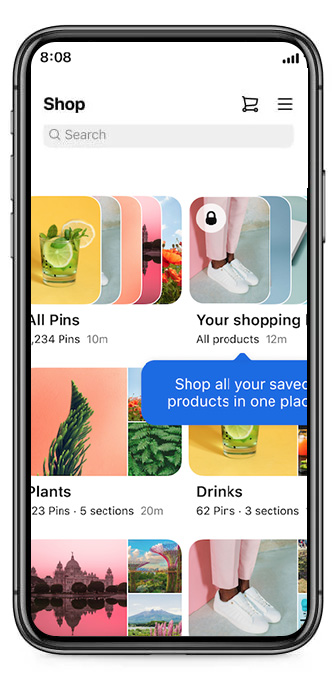
Social media is an important part of the way customers shop today. It should be included in your plan for creating content. You should try to get customers from many different places, not just Google. People use social media for different reasons, but many of the same guidelines still work.
It looks like most people using social media go there to connect with others and find information. Studies show that 54% of people who browse social media check it out to learn more about products or brands.
It’s important to share helpful and interesting content on social media that fits what people are looking for. This means regularly sharing updates to remind people what you do, why it matters, and how you stand out from others.
Make Snippets to Match User Intent
Another way to use user intent to boost your ranking and visibility in search engines is by making content aimed at getting the top spot, known as “position zero,” in search results. These are also called featured snippets or rich snippets.
Google uses these to give quick and clear answers to questions. Even though rich snippets don’t get as many clicks as the top result on search engine results pages, they still have an average click-through rate of 23.3%.
You might get lucky and have Google show your content in featured spots, but it’s much better to change some parts of your content to match what they look for in rich snippets. This means you should keep your paragraphs short and stick to one main idea, like answering a question or explaining a term.
You will also need to use organized tags and schema in your page’s HTML to make your page eligible for different types of rich Snippets, like product images and information, organization details, and more.
Reach Different Groups of Audience With Landing Pages
What people want can change based on the characteristics of your audience. In B2B companies, a CEO who has the power to make decisions might visit a website for a different reason than an employee who is looking for information about something related to the industry.
You can make landing pages for different groups of people to match what they usually want. This could include different things based on who you’re talking to:
- Welcome pages for new customers
- Landing pages for groups of people you want to reach again
- Pages for customers from social media links
- Sales and deals for people who want to save money
The main way to make these pages effective is to match them with keywords that show what people are looking for.
This means that customers who want to know more about your brand can see links to your blog or “about us” page. Meanwhile, customers looking for specific products will be directed to pages where they can buy them.
To Conclude
Knowing what users want is key to successful online marketing and content planning. By understanding why users search for information, businesses can make better content, improve user experiences, and boost their search engine rankings.
This alignment brings in better visitors and helps build trust and loyalty with users. Also, understanding the different reasons people search, such as looking for information, trying to find something, or wanting to buy something, helps marketers create messages that really connect with their audience.
This helps organizations get more customers and improve their marketing, which leads to steady growth. In a more competitive world, focusing on what users want helps businesses stay on top.
This way, they can provide useful experiences that match what their audience needs. Knowing what users want is not just a trick but a smart way to keep customers happy, involved, and successful in online business.
FAQs
How can I figure out user intent?
Finding out what users want means looking at their search terms, how they act online, and the information from website statistics. First, look at the words people are using in search engines. Look for words and phrases that show what people want, like “how to,” “best,” or “buy. ” Tools like Google Analytics, keyword research tools, and checking what competitors are doing can help you understand what users are looking for.
How does what people want affect creating content?
User intent helps decide the topics, styles, and messages that connect with the users. By knowing what people are looking for, businesses can create helpful content that answers their needs and questions. Making sure the content matches what users want helps them stay on the site longer, get more involved, and increases the chances of them taking action, which makes the content more successful overall.
Does user intent change over time?
Yes, user intent can change over time because of new trends, how people act, and what the market needs. When new products, services, or technologies come out, people might start to have different likes and needs. Frequently checking data, listening to what users say, and keeping an eye on changes in the industry helps businesses stay updated. By changing their content and marketing plans to match what users want, companies can stay relevant, keep users interested, and meet the needs of their audience over time.
How can I consider user intent when I plan my marketing?
Include what users want in your marketing plan by dividing your audience according to how they search and what they like. Use what you learn from keyword research and data to adjust your messages, offers, and content to meet the needs of your users. Create focused ads that match what users want, whether they are looking for information or ready to buy. Look at user data often to improve your plan and stay up-to-date, making sure your marketing connects well with your audience.
What happens if we don’t pay attention to user intent?
Not considering what users want can result in content that doesn’t fit, bad experiences, and people leaving the site quickly. When people can’t find what they want, they tend to leave the website fast. This can hurt the site’s search rankings and make it seem less trustworthy. This mismatch can lead to fewer sales and missed chances to sell. It can damage their trust and satisfaction. It’s very important for businesses to create understanding and meeting user needs a top priority in their plans.
